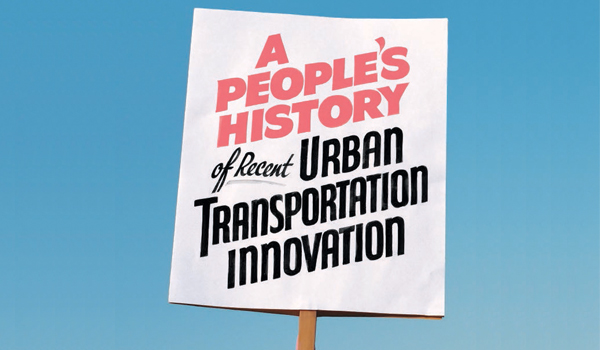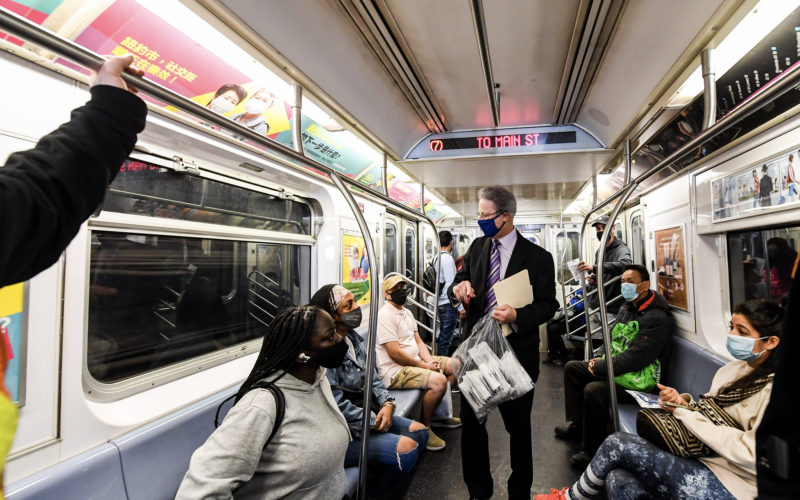


Click to see the full report
What started as a straightforward and curious question – what were the human factors behind recent urban transportation innovations in the United States – turned into a wide exploration of civic action, governance, and the very meaning of innovation for transportation at this moment.
In the past decade, several cities have transformed their streets by adding bus and bike lanes, creating new pedestrian plazas, and emphasizing the movement of people instead of cars. These changes were initiated and led by local-level advocacy, and chronicled in our report, “A People’s History of Recent Urban Transportation Innovation.” Studying recent innovations in transportation practice in six major metropolitan areas in the U.S. we found that local advocacy and civic engagement were a necessary prerequisite for revitalizing urban transportation. The cities studied include New York City, Portland, Chicago, Pittsburgh, Denver, and Charlotte.
Learn More
TransitCenter will be hosting launch events in each of the case study cities celebrating those who made these innovations possible. Check back soon for more information.
Denver – September 16, 2015 (by invitation only)
New York – October 19, 2015 at Parsons School of Design at The New School.
Seattle – October 21, 2015 at 12:30pm in the Bertha Knight Landis Room at Seattle City Hall. Co-hosted by the Mayor’s office and Transportation Choices.
Portland – October 22, 2015 at 6:30pm in the Parsons Gallery at the PSU Center for Urban Affairs. Presented by the Bicycle Transportation Alliance.
 On the Brink: Will WMATA’s Progress Be Erased by 2024?
On the Brink: Will WMATA’s Progress Be Erased by 2024?
The experience of being a WMATA rider has substantially improved over the last 18 months, thanks to changes the agency has made like adding off-peak service and simplifying fares. Things are about to get even better with the launch of all-door boarding later this fall, overnight bus service on some lines starting in December, and an ambitious plan to redesign the Metrobus network. But all of this could go away by July 1, 2024.
Read More What’s Going on With Transit Service at the Seven Highest Ridership U.S. Cities? NYC Edition
What’s Going on With Transit Service at the Seven Highest Ridership U.S. Cities? NYC Edition
New York City Transit’s service levels have remained remarkably strong throughout the pandemic. Crew operator availability remains the agency’s biggest challenge, as well as adjusting weekend maintenance schedules in order to run service that matches strong weekend demand.
Read More